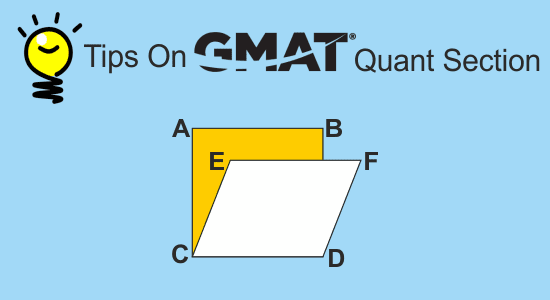GMAT (Graduate Management Aptitude Test) is a computer adaptive test that works as a metric to gauge your logical reasoning skills required for most management programmes including Masters in Finance, Masters in Analytics, and Masters in Management. It is a stepping stone for the MBA programs in all leading business schools across the globe. In this blog, we have shared some tips on how can you master the GMAT quantitative section.
GMAT Quantitative Ability
The GMAT quantitative section evaluates your ability to analyse data and come to conclusions using your logical and reasoning skills. There are 37 multiple-choice questions and you will have 75 minutes to complete the section. Scores on this section technically range from 0 to 60; however, people actually score in the range of 6 to 51 i.e. 51 or above are 99th percentile for the GMAT Quant section. The best way you ace the quantitative section is to hone your arithmetic skills. Covering maths topic from your high secondary years will suffice; however, you must specifically emphasise on topics such as Permutation, Probability, and Coordinates. This is because such topics are quite scoring and can help you achieve your required scoring target. Be confident and start by brushing up on all the important concepts and fundamentals. You must refer to the latest edition of the Official Guide & go through the entire content under the heading “Math Review” which has about 30-40 pages.
Also Read: GMAT 2022 – A Complete Study Guide to know GMAT Inside Out
What is Tested in the Quantitative Ability Section?
This section tests your knowledge of basic maths concepts. GMAT will not test your knowledge of advanced maths concepts like Trigonometry, Calculus or Vectors. They will test your skills on basic concepts. In fact, you just need to know the high school level maths to perform well in this section. You’ll see most of Quant’s questions from the following:
- Numbers – Primes, Factors, Multiples,
- Percentages
- Ratios
- Linear and Quadratic equations
- Inequalities
- Exponents and Square roots
- 2D/3D Geometry & Coordinate
- Variable operation
- Statistics
Top Tips for Mastering the GMAT Quantitative Section
There will be two types of questions in GMAT Quantitative – Data Sufficiency and Problem Solving. Problem-solving will test your knowledge of how well you can solve numerical problems to figure out the right answer while data sufficiency tests your ability to determine whether the information provided is sufficient to solve the question for a unique numerical value or consistent answer. The following tips will help you to master the GMAT maths section.
- You will not be able to use the calculator in this section, so you need to be very fast with your calculations. Start your practice adding and subtracting fractions and decimals. Learn all the exponent rules and all common roots.
- GMAT questions are designed to look hard. No matter how difficult it looks, go slow and be confident as you only need to apply high school maths. Break your problem into 2-3 parts, begin with what you know, and you will be able to move towards the right answer.
- If a question gives you only variables and doesn’t ask you for a unique value, you must plug in smart numbers (like -1, 1, 0, 1) to make that problem easier.
- Every data-sufficiency question has the same order of answer choices, so you must memorise all of them well.
- Start your practice with topic-wise questions (level of difficulty which is slightly higher than your Diagnostic Test). Be sure that you only practice questions close to the GMAT from reliable sources.
- Familiarise yourself with the structure of Data Sufficiency questions and the concepts; they have a high chance of appearing in the test.
- While practising topics, make sure to take note of your mistakes & chart a pattern out of them.
- While practising, time your drills and tests according to the actual test.
- At least 45 days prior to GMAT start giving official full-length tests.
- Strategies like back-solving must be used to speed up the calculations.
- Try to spend your time on most tested concepts rather than mastering each topic in depth as GMAT is more about logic than checking your calculus.
- Memorize squares from 2 to 25 and reciprocals to percentages from ½ to 1/20.
- Don’t practice only hard questions, give appropriate time to other questions because the GMAT test is based on a logical approach.
This section may be daunting for many test takers but with careful preparation of all important concepts and adequate practice, you’ll be able to master it. Time management is obviously an essential GMAT key, which cannot be enhanced in one or two days. So keep practising with timers and give timed sectional tests to build up your stamina for the same.
If you want to get into a high-ranked university, you may enlist the assistance of Leverage Edu specialists to assist you with the application process. Call us immediately at 1800 57 2000 for a free 30-minute counselling session.

 One app for all your study abroad needs
One app for all your study abroad needs






















 45,000+ students realised their study abroad dream with us. Take the first step today.
45,000+ students realised their study abroad dream with us. Take the first step today.

